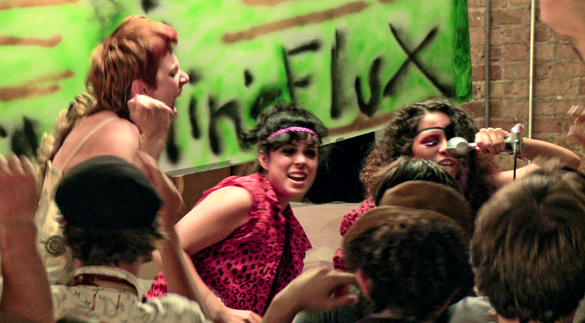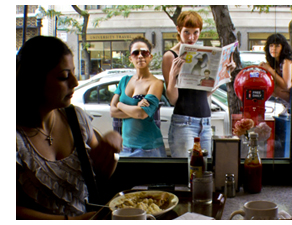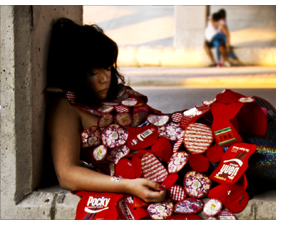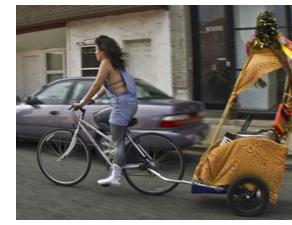| Sun | Mon | Tue | Wed | Thu | Fri | Sat |
|---|---|---|---|---|---|---|
| 1 | 2 | 3 | 4 | 5 | ||
| 6 | 7 | 8 | 9 | 10 | 11 | 12 |
| 13 | 14 | 15 | 16 | 17 | 18 | 19 |
| 20 | 21 | 22 | 23 | 24 | 25 | 26 |
| 27 | 28 | 29 | 30 | 31 |
CATEGORIES
RECENT ENTRIES
BLOG ROLL
Maroon Lens: Ben Kolak
Maroon Lens is an occasional column about alumni filmmakers. In this installment, Ben Kolak, director of Schizcago, discusses experimental comedy, anarchy, and Valois.
By Ruth E. Kott, AM'07

Ben Kolak, AB'06, was one of three alumni filmmakers to produce Scrappers, a heart-warming documentary about two men making a living scavenging Chicago alleyways for metal. Now he's cowritten and directed an "experimental-comedy" film, Schizcago (pronounced _skĭts'-kä'gō_), about a group of privileged friends in Chicago who spend their days "fak[ing] their way into clinical trials" and promoting themselves as "corporate youth consultants," and their nights partying. Don't watch the trailer at work or in a public library: one second in, you see bare nipples.
On May 20 and 21 the film has its first public showing—a preview, Kolak says in an e-mail, "mainly for those involved in making the film and to get some press," and to "drum up interest for online distribution and a rock band-like tour of the film at artist spaces, bars, etc, this autumn (which are cheaper/smaller/easier to book than movie theaters.)" If you're in Chicago, stop by the Building Stage (412 N. Carpenter Street) at 10 p.m. Friday and Saturday nights to see the film.

How is making a fiction film different from a documentary?
I’ll begin by saying that risk-taking makes for good cinema: straying from traditional expectations of how projects are conceptualized, made and marketed. Documentaries usually involve small crews, so the main task is a personal one, of finding and relating to novel subjects and differentiating one's vision. On the other hand, since fiction films require a lot of people to make, the task is more a pragmatic and communal one, of teaming up with skilled collaborators who are up for working 14-hour days at minimum wage yet who are also committed to the nature of the experiment.
In terms of marketing, documentaries have an instant claim of educational and cultural value and an appeal to truth, reality, and intelligence, which can be used by cultural institutions and media outlets to market them, in contrast to studio films or television shows; whereas fictional films are more apt to be dismissed as entertainment, even when they engage serious issues with artistic legitimacy. In my experience, until one is able to get an agent or studio, marketing fictional films is really, really hard, which is why with Schizcago we're sticking to small venues (art galleries, bars) to build a base audience for online distribution and garner enough attention to make possible bigger projects in the future.
What does "experimental comedy" mean in the context of this film?
We took a lot of risks, and we failed a lot, but I think the moments where the film works more than justify the strike-outs. One of the main risks in Schizcago was genre-mixing: changing, without any cues, from romantic comedy to science fiction to avante-garde modes of address. This made for some funny moments, which are also really hard to describe in an interview.

Working on such a tight budget and schedule, I gave total freedom to the art director, Daniel Evans, to forge his own style of hipster/drifter aesthetic, and I encouraged the talent to go with their first impulse in regards to performance style. So as director I was more charged with making sense of their art rather than directing it. We worked with what we had ready to hand in closets and dumpsters and through contacts to get props and access to locations. To move more quickly I had the cinematographer respond to the action as though it were a documentary rather than working through explicit storyboards and camera moves. All this gives the film a raw, often laughably amateur look and style, and that's a big part of where we want the comedy to come from: the audience ought to have a good chuckle making sense of how and why this film came to be.
Where did the idea come from?
The film is a mock-ethnography of privileged urban youth who participate in clinical trials and work as youth consumer consultants to pay their rent and support their art projects. I thought about the project as a documentary about how my friends got by and gave meaning to their lives, but twisted to be even more uncanny and socially relevant. We were striving for a surreal aesthetic: to create a world similar enough to our own to elicit empathy and reflection from our audience but different enough to seed new possibilities for thought about wage relations, the pharmaceutical industry, retail marketing, and the social experience of contemporary American youth. My most explicit consideration of the issues in the film began with two classes at U of C: Professor Jean Comaroff's Medicine and Culture and Professor W. J. T Mitchell's Theories of Media. But my biggest influence was U of C alum David Graeber, AB'87, PhD'96, who was kicked out of the anthropology department at Yale a few years ago for being an anarchist. I had the cast read and deliver reports on two of his books: Fragments of an Anarchist Anthropology and Toward an Anthropological Theory of Value.
What was the casting like?
Casting took a few months, we saw a lot of great people from DePaul’s Theater School (two of which we cast, Christina Nieves and Zach Kennedy) as well as Northwestern, Columbia College (one of whom we cast, Molly Plunk), and many other established folks in Chicago’s theater community, including Ricardo Gamboa, who plays one of the leads, Morris.
Did you know Angeline Gragasin, AB'07, who plays Lacey in the film?

Ricardo had worked with Angeline Gragasin at Redmoon Theater, and while I had known Angeline from U of C, I didn’t think she would be nerdy/sheepish enough to play Lacey, who was supposed to come off as kind of the third wheel of the sexy lesbian couple Renee and Sandy. But Ricky said I had a skewed vision of what nerdy was, coming from the U of C, and that Angeline was more than nerdy enough and would be perfect for the role. After having been really involved in University Theater, Angeline had kind of stopped acting to focus on being a web guru, but when I met with her and told her about how unconventional the project was, she was really into it, particularly the fact that she would be playing a character who got eyeballs implanted in her wrists as part of a military experiment and had cubist vision, and that she would get to do some of this cubist cinematography herself.
There's a scene in the movie that takes place in Valois. What happened in that scene?
The scene in Valois involves three of the characters, Renee, Sandy, and Lacey, who wait for patrons to get up and leave, and then run to tables to eat the leftovers before the busboys take the food away. They’re broke because they’ve recently spent all their money making LED throwies and setting up pirate radio broadcast antennas. While in Valois, Renee and Sandy convince Lacey to partake in a new caper.
May 20, 2011
